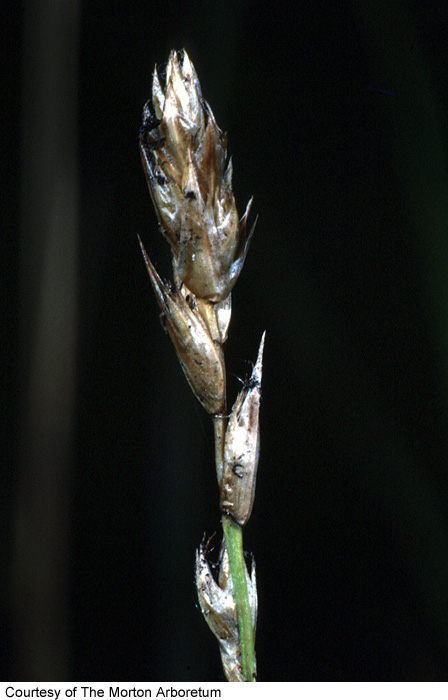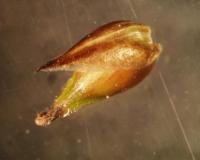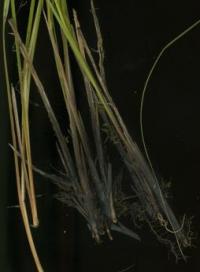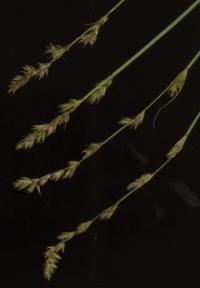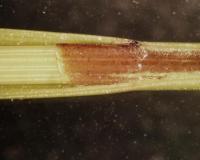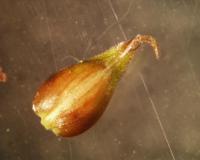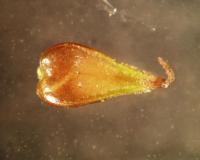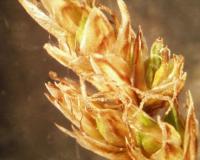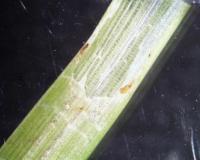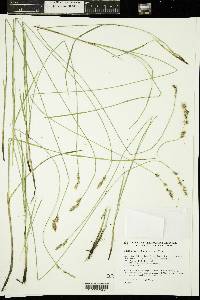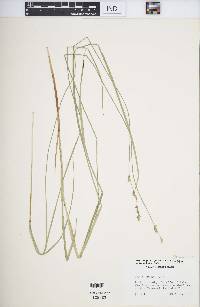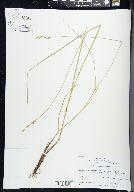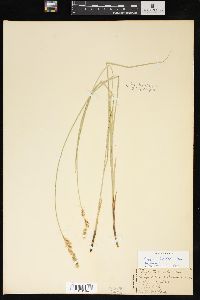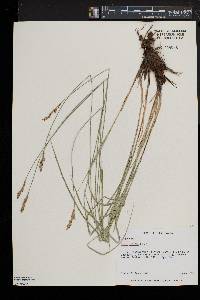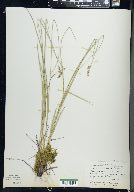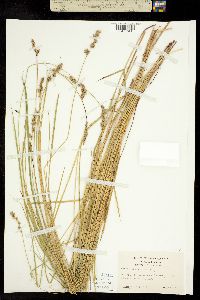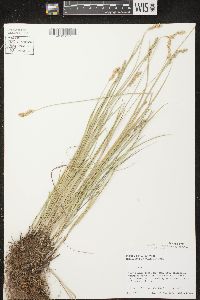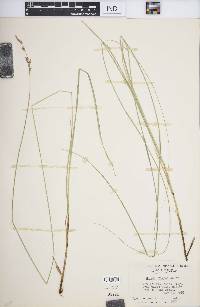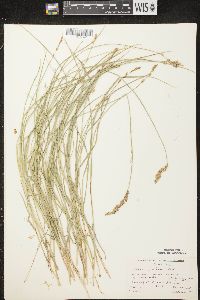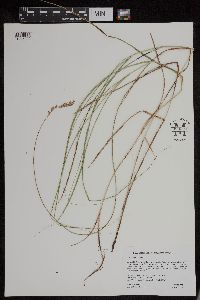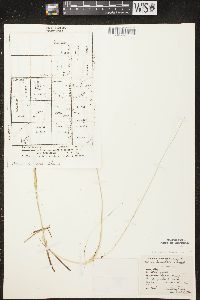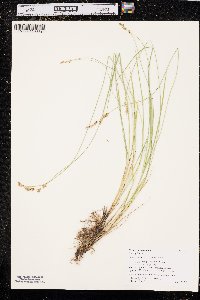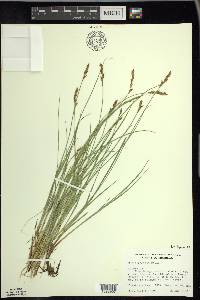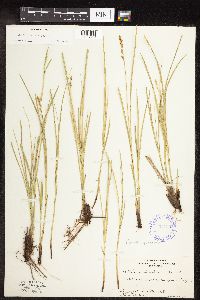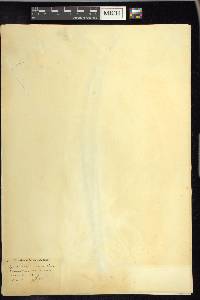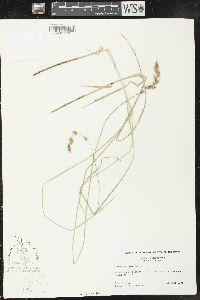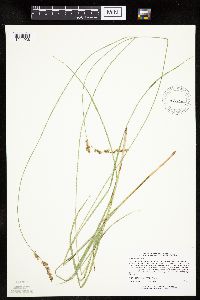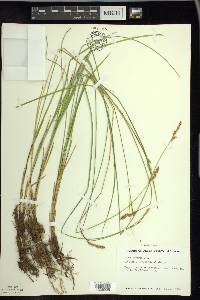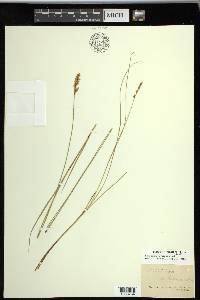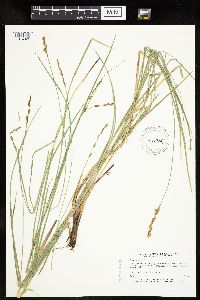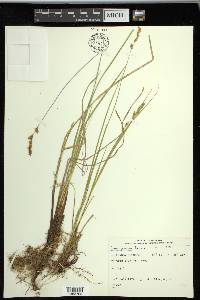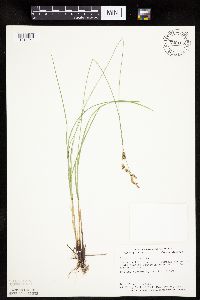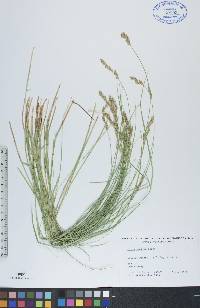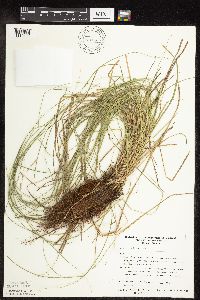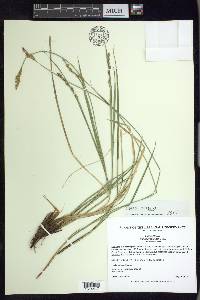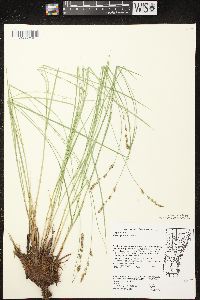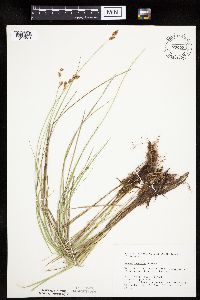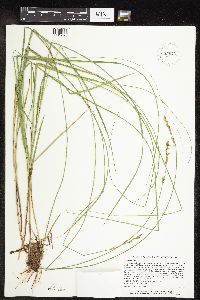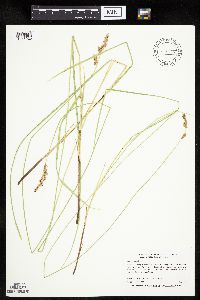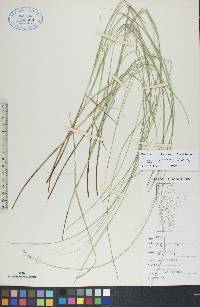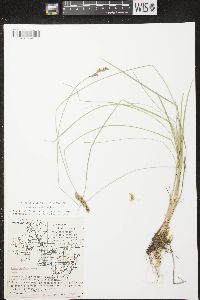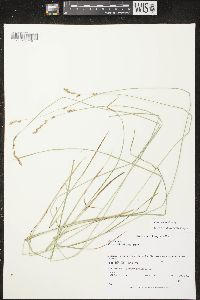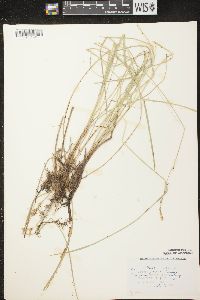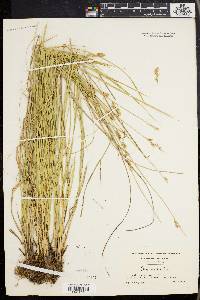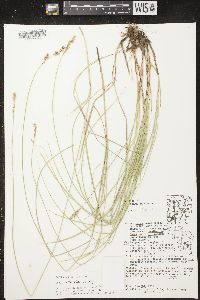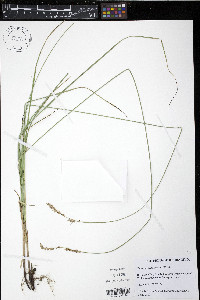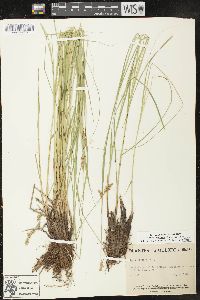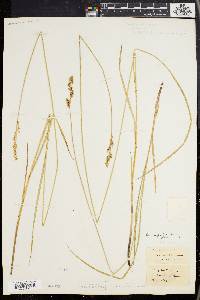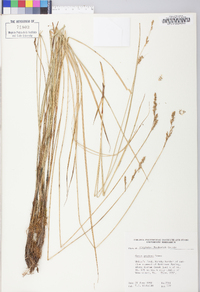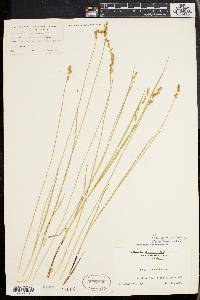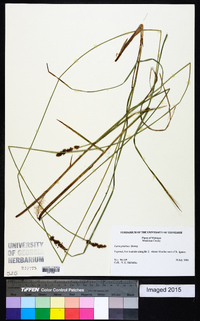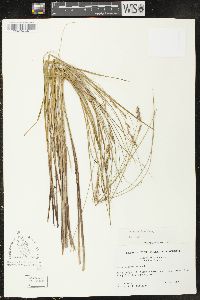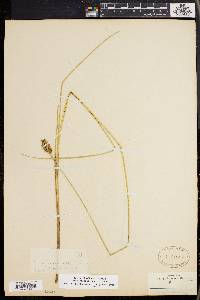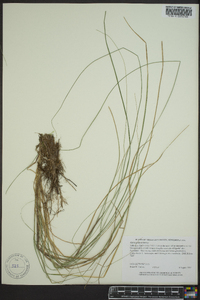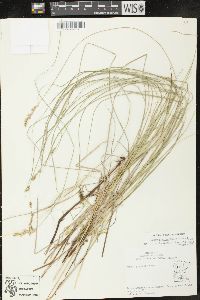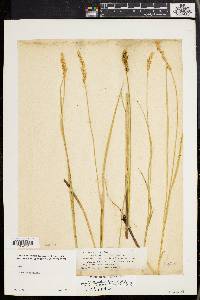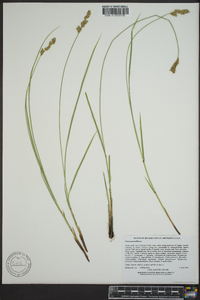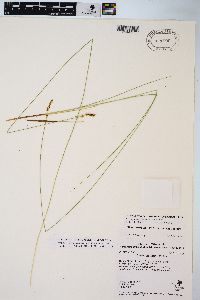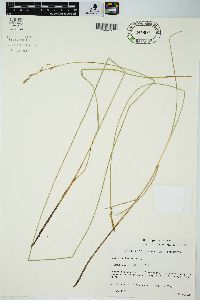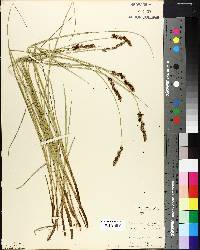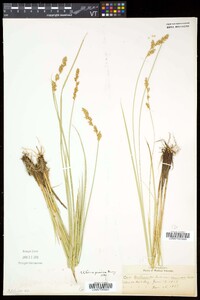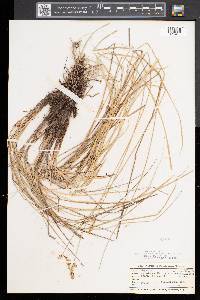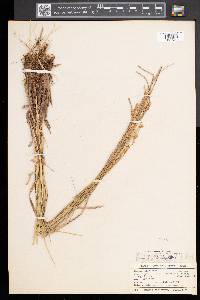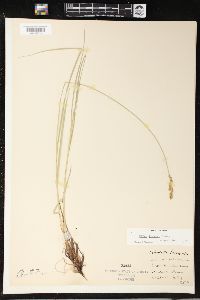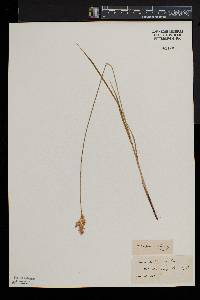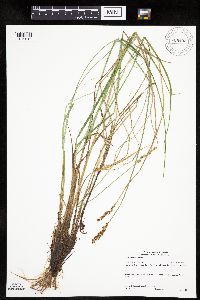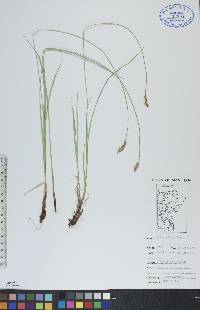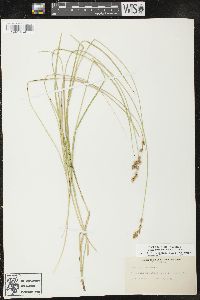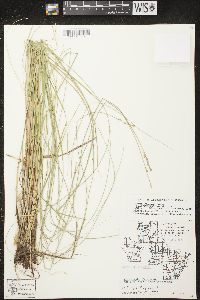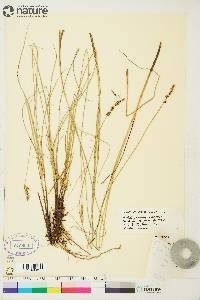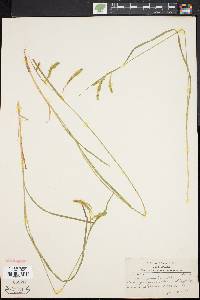
|
|
|
|
Family: Cyperaceae
Prairie Sedge
|
Culms 3-6 cm (fl), elongating to 6-100 cm (fr). Leaves: sheaths adaxially strongly copper colored distally, truncate to convex at mouth, prolonged 2-8 mm beyond base of blade; ligules 1.2-5.8(-9.2) mm; foliage leaf blades 6-50 cm × 2-3 mm. Inflorescences bisexual or, sometimes, nearly or wholly unisexual, flexuous and interrupted, proximal 1-5 branches often separated, decompound, 3-8(-9) × (0.4-)0.8-1.8 cm; basal branch with (2-)4-10 spikes; proximal internode 7-26(-33) mm. Pistillate scales light reddish brown, 2.4-3.3 × (1.1-)1.4-2.1 mm, as wide as or wider than perigynia. Perigynia appressed or ascending, straw colored to light or dark brown, strongly 6-9-veined abaxially, with or without median lengthwise groove near base, sometimes membranous flap toward apex, lance-ovate (body ovate to very widely ovate) in outline, plano-convex, (2.1-)2.3-3(-3.3) × (1-)1.1-1.4 mm, dull; beak 0.8-1.4 mm. Achenes broadly or very broadly trullate-ovate in outline, 1.2-1.6 × 0.7-1 mm. 2n = 66. Fruiting Jun-Jul (Aug in w Canada). Wet meadows, peaty ground, usually in calcareous marshes, prairies, fens, and swales, often on borders of lakes and streams or in open conifer swamps (Larix, Picea, Thuja), also thickets and ditches; 0-1400 m; Alta., B.C., Man., N.B., N.W.T., N.S., Ont., Que., Sask., Yukon; Conn., Ill., Ind., Iowa, Maine, Mass., Mich., Minn., Mont., Nebr., N.J., N.Y., N.Dak., Ohio, Pa., S.Dak., Vt., Va., W.Va., Wis. The geographic range of Carex prairea is rather fragmented except for a core zone that extends from southern Quebec and New England to Alberta. Oregon, Idaho, Wyoming, and California reports should probably be referred to C. cusickii or some other species, because south of the Canadian border (except for one locality in western Montana), C. prairea is unknown from west of the Great Plains. Carex appropinquata Schumacher, reported from Manitoba by W. J. Hooker ([1829-]1840, as C. paradoxa Willdenow) and from Colorado by L. Kelso (1953, 1953b), must be excluded. Hooker´s citation possibly refers to C. praegracilis W. Boott or less likely to C. prairea, and Kelso´s specimens (in US) are C. praegracilis. Carex prairea and C. diandra are closely related and may not appear to be sharply differentiated. However, they maintain separate identities throughout their overlapping ranges and prefer subtly different habitats. Carex prairea is strictly calcicolous, avoiding saline groundwater and oligotrophic muskegs, whereas C. diandra does not require calcareous conditions and so is more likely to be found, for example, in New England and the Canadian Shield region.
Stems clustered, aphyllopodic, 5-10 dm, somewhat exceeding the lvs; main lvs 2-3 mm wide; sheaths prolonged 2-3 mm beyond the base of the blade, strongly coppery toward the mouth ventrally; spikes androgynous, numerous, small, sessile, aggregated into a thick- spiciform infl, this 3-8 cm, usually interrupted below, compound, at least the lowest node with 2 or 3 spikes; scales reddish-brown, lance-ovate, as long as and largely concealing the ±appressed perigynia, these brown, dull, lance-ovate, 2.5-3 mm, half as wide, tapering to a serrulate, pale beak nearly as long as the body, flat to low-convex and nearly nerveless ventrally, broadly rounded and strongly few-nerved dorsally, the main nerves divergent well above the base; 2n=66. Swamps, wet meadows, and wet prairies; Que. to Sask., s. to N.J., O., and Io. (C. diandra var. ramosa) Gleason, Henry A. & Cronquist, Arthur J. 1991. Manual of vascular plants of northeastern United States and adjacent Canada. lxxv + 910 pp. ©The New York Botanical Garden. All rights reserved. Used by permission. From Flora of Indiana (1940) by Charles C. Deam Frequent, except in southernmost counties, in marshes, tamarack bogs, marly swamps and on borders of streams or lakes. ...... Indiana Coefficient of Conservatism: C = 10 Wetland Indicator Status: OBL |
|
|
|
This project was made possible in part by the Institute of Museum and Library Services [MG-70-19-0057-19].
Powered by Symbiota

